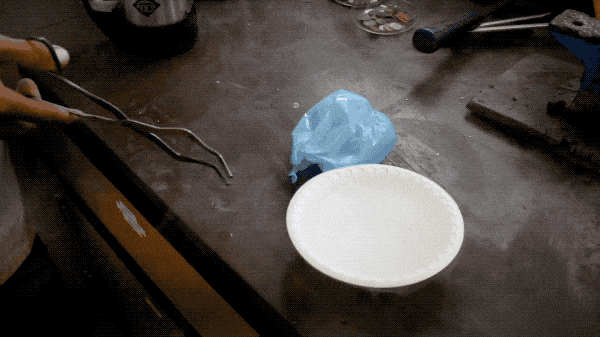It’s one of those basic rules we grow up hearing: hot air rises and cool air sinks. But why is that the case? If you’ve read our piece on buoyancy, you know that density is one of the key factors in determining whether an object sinks or floats in a given substance. However, a substance’s density doesn’t have to remain the same. The secret is in the name itself: hot air balloon.
In this article, we’ll explain why hot air balloons are able to float and explore the ways in which they differ from traditional helium balloons. Let’s dive in!

Why Do Hot Air Balloons Float?
Hot air balloons float by altering the temperature of the air inside of them. As the density inside decreases, the balloon rises.
Since setting off a hot air balloon would be too expensive and a floating lantern is a fire hazard, we showed this same effect by altering the temperature of a helium balloon to prevent it from floating in the air.
But first, we need to explain the Ideal Gas Law.
What is the Ideal Gas Law?
This all ties back to something in physics called the Ideal Gas Law, which helps us understand how gases behave in different conditions. It can be expressed as:
PV=nRT
pressure x volume = number of moles of a substance x the gas constant x temperature
Helium Balloons vs. Hot Air Balloons
In the case of hot air and helium balloons, “n,” “R,” and “P” are not changing, which means we can focus on volume and temperature.
Helium Balloons
By decreasing the temperature of the helium balloon, the volume must also decrease. Since density is described as mass divided by volume, as volume decreases, density increases. With enough drop in volume, the helium balloon becomes too dense to float.
After being removed from the liquid nitrogen, the balloon slowly heats back up to room temperature. As it heats up, it returns to its original volume and floats back to the ceiling.
Hot Air Balloons
The reverse is true in a hot air balloon, with its density starting equal to the air outside it. As the air inside it is heated, its density decreases to the point where it has so much buoyant force lifting up on it that it can lift not only the balloon but the basket and passengers as well.
When it’s in the air, the operator has to make sure the air stays at a consistent temperature for them to maintain altitude. An increase or decrease in temperature will lead to an increase or decrease in altitude respectively.
So, How Exactly Do Hot Air Balloons Work?
While this unique aircraft can seem a bit mysterious, hot air balloons function due to the laws of science. Buoyancy is particularly at play as it is the reason objects float. To put it simply, hot air balloons work because warm air rises. When the burner is turned on inside of the balloon’s envelope, the balloon becomes lighter and ascends in the process. If the burner is turned down and heat is released, the balloon will begin to lower.
Lift: The Upward Force
In addition to buoyancy, lift plays a big role in allowing a hot air balloon to float. When the balloon’s burner is turned on, the air inside becomes less dense than the cooler air that surrounds it. This creates a difference in density that is known as a force we call lift. The warm air begins pushing against the dense, cool air and this facilitates the balloon’s rise. Larger differences in density create more lift, allowing the hot air balloon to easily soar to new heights.
Wind and Weather
Wondering how the weather affects hot air balloon travel? While buoyancy and lift play pivotal roles in allowing a hot air balloon to get off the ground, wind and weather certainly impact its ability to do so as well. It can be unsafe to fly during a storm or when strong winds occur. Pilots are trained to spot these conditions and often fly when the weather is at its calmest.
While hot air balloons do depend on the direction and speed of the wind, there are a few methods that can be used to control the balloon. Pilots are able to navigate the balloon’s ascent, adjusting the altitude as needed to follow the wind currents at different heights. A parachute vent, which is a small vent that can be adjusted to control how quickly a balloon’s height changes, is also present at the top of hot air balloons.
AstroCamp: Where Science Meets Fun!
Want to learn more about the physics of hot air balloons and try your hand at other awesome science experiments? AstroCamp is an overnight summer camp focused on STEM activities, located in beautiful Southern California!
Interested in joining us for our upcoming season? Explore our 1-week and 2-week sessions to get more details on age groups, what’s included, and much more!
